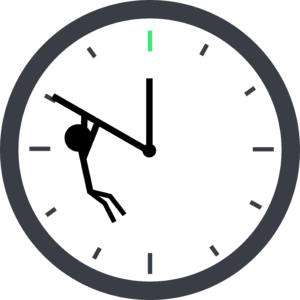
Physical Activity and Cognitive Longevity | Boost Brain Health with Movement
Physical activity isn’t just about keeping your body fit—it’s also one of the most effective ways to preserve and enhance brain health. Regular exercise supports cognitive function, reduces the risk of age-related mental decline, and even promotes neurogenesis (the growth of new brain cells).
This guide explores the science behind how movement benefits your brain, the types of exercise best for cognitive longevity, and practical tips to stay active.
How Exercise Supports Brain Health
Physical activity directly impacts your brain through several key mechanisms:
- Improved Blood Flow
-
- Exercise increases circulation, delivering oxygen and nutrients to the brain.
- Enhanced blood flow supports memory, focus, and overall mental performance.
- Neurogenesis
-
- Aerobic activity stimulates the growth of new neurons, particularly in the hippocampus, the brain’s centre for memory and learning.
- Reduced Inflammation
-
- Chronic inflammation contributes to cognitive decline, but exercise lowers inflammatory markers in the brain and body.
- Stress Hormone Regulation
-
- Movement reduces levels of cortisol, a stress hormone that can harm cognitive function when elevated.
Types of Exercise for Cognitive Benefits
Different forms of exercise offer unique advantages for brain health:
- Aerobic Exercise
-
- Examples: Walking, running, swimming, cycling.
- Benefits: Improves memory, attention, and executive function by enhancing blood flow and oxygen delivery to the brain.
- Strength Training
-
- Examples: Weightlifting, resistance bands, bodyweight exercises.
- Benefits: Promotes the release of brain-derived neurotrophic factor (BDNF), which supports neuron survival and growth.
- Yoga and Mind-Body Exercises
-
- Examples: Yoga, tai chi, Pilates.
- Benefits: Reduces stress, improves focus, and enhances overall mental clarity through mindful movement.
- Balance and Coordination Activities
-
- Examples: Dancing, martial arts, or balance drills.
- Benefits: Stimulates multiple areas of the brain, improving both motor and cognitive skills.
Physical Activity and Specific Cognitive Functions
Memory
- Aerobic exercise enhances the hippocampus, supporting memory retention and recall.
Focus and Attention
- Regular movement improves your brain’s ability to sustain attention and process information quickly.
Mood and Mental Resilience
- Exercise triggers the release of endorphins, serotonin, and dopamine, enhancing mood and reducing anxiety.
Problem-Solving and Creativity
- Physical activity boosts cognitive flexibility, helping you think more creatively and solve problems effectively.
Exercise for Preventing Cognitive Decline
Regular exercise has been linked to a lower risk of age-related conditions, such as:
- Alzheimer’s Disease: Physical activity slows the build-up of amyloid plaques, a hallmark of Alzheimer’s.
- Dementia: Exercise reduces overall risk and delays the onset of symptoms.
- Mild Cognitive Impairment (MCI): Staying active can help manage early signs of cognitive decline.
Supporting Research
- A study in the Journal of Alzheimer’s Disease found that moderate physical activity improves brain volume and reduces dementia risk.
- Harvard researchers reported that individuals who engage in regular exercise have a 20–30% lower risk of cognitive decline.
How Much Exercise Is Enough?
The World Health Organization recommends:
- Aerobic Activity: At least 150 minutes of moderate-intensity or 75 minutes of vigorous-intensity exercise per week.
- Strength Training: Two sessions per week focusing on all major muscle groups.
- Balance and Flexibility: Add activities like yoga or tai chi to enhance coordination and reduce fall risk.
Incorporating Movement Into Daily Life
- Walk More: Take the stairs, park further away, or enjoy a brisk walk during lunch breaks.
- Dance: Join a dance class or turn on music at home to move more.
- Garden: Digging, planting, and weeding provide both physical and mental stimulation.
- Exercise with Friends: Social workouts keep you accountable and make exercise enjoyable.
Debunking Myths About Exercise and Brain Health
Myth: Only Intense Workouts Benefit the Brain
Even light-to-moderate activity, like walking, has significant cognitive benefits.
Myth: It’s Too Late to Start Exercising
Exercise benefits the brain at any age. Neuroplasticity ensures that new habits can still make a difference.
Myth: Exercise Alone Is Enough
While exercise is vital, combining it with healthy eating, sleep, and mental stimulation maximises brain health.
Your Journey to Cognitive Longevity
Physical activity is one of the most effective tools for protecting your brain and enhancing cognitive function. By making movement a regular part of your routine, you can support memory, focus, and overall mental resilience at any age.
At Slowing the Clock, we provide resources, tips, and personalised plans to help you incorporate exercise into your life for long-term brain health. Explore our website for more insights into fitness, cognitive longevity, and mental wellbeing.